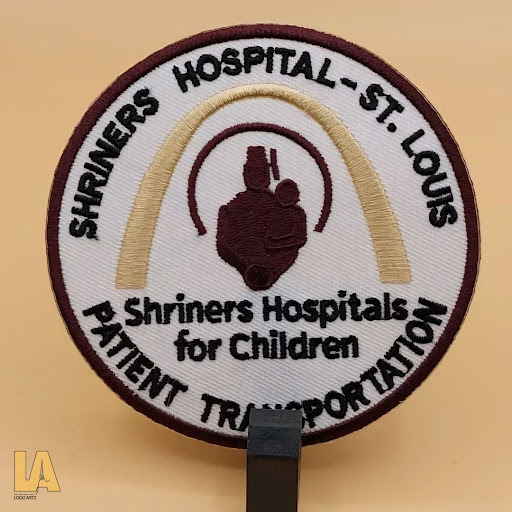Understanding Embroidery Percentages: Choosing the Right Coverage for Your Custom Patch Design
Creating custom patches requires important design decisions, one of which is embroidery coverage. The percentage of embroidery can impact the aesthetics, cost, and final product's durability. This blog explores embroidery percentages in detail, helping you decide the best option for your design. At Logo Artz, we offer expert guidance and quality patch production. Our mission is to make the process seamless and enjoyable while ensuring that your custom patches meet your expectations.
What Are Embroidery Percentages?
Embroidery percentages refer to the amount of twill fabric covered by thread in a custom patch. These percentages usually range from less than 100% to full coverage (100%). The choice of embroidery percentage can influence the look and cost of the patch, as well as its texture and thickness.
Partial Embroidery (Less than 100%)
Partial embroidery refers to patches where only a portion of the twill fabric is covered by thread, leaving some areas of the twill exposed. This option is often used when a design contains large sections of solid color that do not require additional stitching. It's an ideal choice for logos or designs that feature solid backgrounds, as it allows the twill's color to contribute to the overall design.
Benefits of Partial Embroidery
- Cost-Effective: Partial embroidery is a budget-friendly option. Since less thread is used, the overall cost of production is lower.
- Faster Production Time: With less area to cover, the stitching process is faster, allowing for quicker turnaround times.
- Natural Background Appeal: Exposing part of the twill fabric can create a sleek, minimalist look, making it perfect for designs that don’t require intense detailing.

When to Choose Partial Embroidery
Partial embroidery is ideal when you want a simple, clean design that doesn’t rely on intricate detailing. If your design has large, solid-colored areas and you prefer a low-cost option, partial embroidery might be the best route. For example, team logos or brand labels often work well with partial coverage, as the background can complement the overall look.
Full Embroidery (100% Coverage)
Full embroidery patches, as the name suggests, cover the entire surface of the twill fabric with thread. This type of embroidery is often chosen for its rich texture and durability, as the entire design is sewn onto the fabric.
Benefits of Full Embroidery
- Enhanced Durability: Full embroidery adds thickness and durability to the patch, making it more resilient and less prone to wear and tear.
- Vibrant Design: With thread covering the entire surface, the design is more prominent and detailed, allowing for a higher level of complexity and vibrancy in color.
- Professional Appearance: Full embroidery provides a premium, professional look. Many organizations prefer this option for patches on uniforms, corporate branding, and promotional materials.

When to Choose Full Embroidery
Full embroidery is ideal when your design contains a lot of intricate details, shading, or multiple colors. It works well for designs that demand attention, such as military patches, badges, or high-quality brand logos. If you want a patch that stands out and adds a tactile feel, full embroidery is the way to go.

Factors to Consider When Choosing Embroidery Percentages
Choosing between partial and full embroidery depends on various factors, including the design, purpose, and budget of your patch. Consider the following points before making your decision:
- Design Complexity: Complex designs with fine details and shading generally benefit from full embroidery, as it allows for better definition and precision. Simpler designs with large solid areas can take advantage of partial embroidery, which is more cost-effective while still looking clean and professional.
- Intended Use: The intended use of your patch is crucial when deciding on embroidery coverage. Patches meant for heavy-duty use, such as uniforms or outdoor gear, will benefit from the durability and thickness of full embroidery. On the other hand, decorative patches for casual wear may not require the added weight and can be designed with partial coverage.
- Budget Considerations: Partial embroidery is the more affordable option, as it requires less thread and stitching time. If you’re working with a limited budget, partial coverage allows you to maintain a high-quality design at a lower cost. However, if you’re aiming for a luxurious, high-end look, investing in full embroidery may be worth the additional expense.
Conclusion: Choosing the Best Embroidery Percentage for Your Patch
Ultimately, the choice between partial and full embroidery comes down to your design’s needs and your personal preference. Both options have their advantages, and understanding the differences can help you make an informed decision. Whether you're looking for a cost-effective, minimalist patch or a detailed, vibrant design, Logo Artz is here to bring your vision to life. Our team of experienced professionals is ready to help you choose the right embroidery percentage for your custom patches.
Ready to create your perfect patch? Whether you need partial or full embroidery, Logo Artz is here to guide you every step of the way. Contact us today to get started on designing your custom patch and experience the highest level of craftsmanship!
